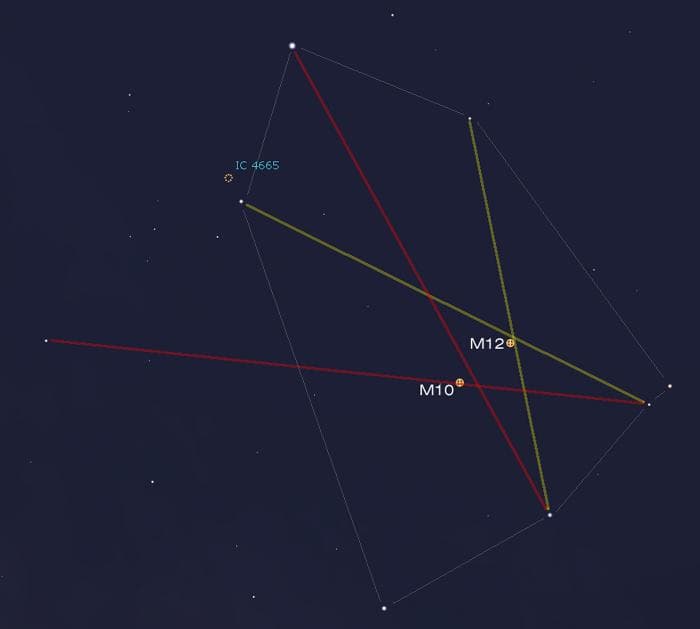
with David Fuller

How to find Messier 10 and Messier 12
There are various ways to find objects in the sky. Some are easy, such as, "Point your telescope right at Saturn / Albireo / the Moon." Others take a bit more effort. Ophiuchus is a large constellation, just above the better-known Sagittarius and Scorpius. While large, it only has 3 stars of magnitude 2, but a total of 9 at 3rd magnitude or brighter. So city observers may have some challenges, but suburban viewers can likely navigate their way around this large "doctor in the sky" with little difficulty.
There are a number of Messier objects in Ophiuchus, along with some great double stars and other clusters. But two that are right near each other are Messier 10 and Messier 12, globular clusters both. While relatively bright as globulars go, they aren't exactly right next to any 2nd or 3rd magnitude stars, so there are a few techniques required to find them.
One is by drawing a few imaginary lines in the sky that intersect where the clusters are located. This graphic below shows how t that can be done:

Check out the video below to learn exactly which stars to use to find these globular clusters. Another option is to "star hop" to Messier 10 and Messier 12. The video also shows how to do that too.
These two objects are only 3 degrees apart from each other, so they are fun to go back and forth between them and compare how they look at the eyepiece. Summer is a great time to view objects in Ophiuchus, as the constellation is along the meridian after it gets truly dark, placing objects like M10 and M12 at their highest point in the sky - and therefore their best viewing location too. YOu can get more tips on observing deep sky objects here.
